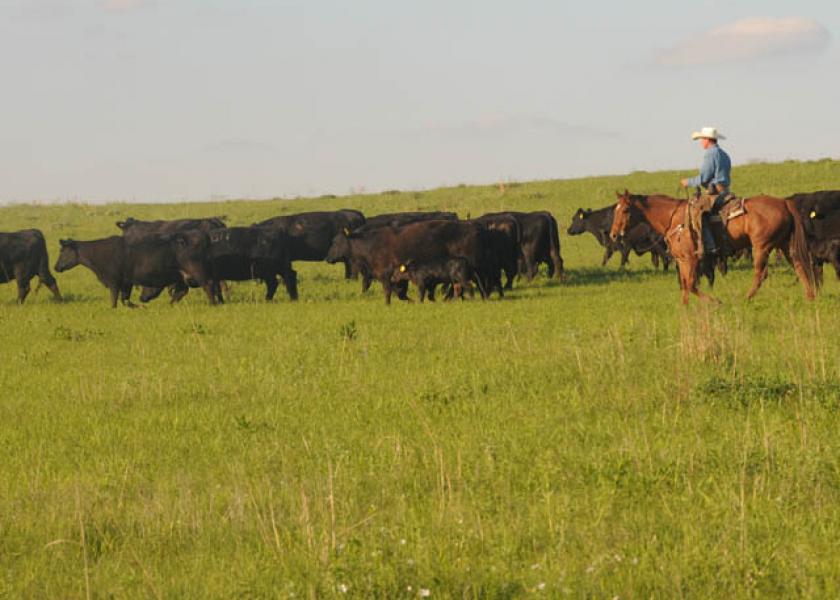Drought Conditions Curb Beef Herd Expansion

Growth of America’s cowherd shows signs of stalling. As of Jan. 1, USDA reports total cattle and calves numbers at 94.3 million, which is an increase of less than 1% versus 2017. Total beef cows were 31.7 million—the largest level since 2008. However, breeding cattle inventories signal a decrease in the rate of expansion.
“The herd expansion is slowing down, and it looks like we’ll be at our peak cattle inventory numbers in 2019 or 2020,” says Randy Blach, CEO of CattleFax.
Since 2015, ranchers have added 2.4 million beef cows to their herds. This expansion was a sign of good times and ample forages, says John Nalivka, Sterling Marketing president. But, the tides have turned.
Drought spread across cattle country this past fall and intensified during the winter. The epicenter of the current drought rests over the Texas and Oklahoma Panhandles and southwestern Kansas, but extends into almost every state from the Gulf of Mexico to the Canadian border. This 14-state area is where 60% of America’s cowherds reside.
Drought conditions have already influenced beef production and cattle prices. Winter wheat grazing was poor, pushing cattle to feedyards earlier than planned. That led to larger feedyard inventories that could shift slaughter and production patterns. As of Jan. 1, 14 million head of cattle were on feed, which is largest amount since 2012.
“Beef production will be up 6% compared to 2017,” Nalivka says.
In 2017, the U.S. beef industry produced 745 lb. of beef per cow, and Nalivka projects that number to rise to 774 lb. per cow in 2018, a 4% increase.







